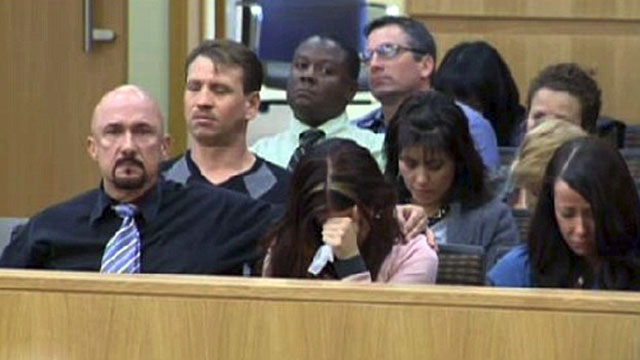The Verdict on the Travis Alexander Case: A Family’s Struggle for Justice
The Travis Alexander case captivated the nation, a whirlwind of beauty, betrayal, and brutal violence. The shocking details, the salacious revelations, and the dramatic courtroom showdowns kept audiences glued to their screens and captivated by the unfolding drama. Beyond the sensationalism, however, lay a profound tragedy: the life of a young man cut short and a family’s relentless fight for justice. This article delves into the core aspects of the case, examining the trial, the verdict, and the lasting impact on the Alexander family.
The Crime: A Scene of Unimaginable Violence
On June 4, 2008, Travis Alexander, a 30-year-old motivational speaker and businessman, was found murdered in his Mesa, Arizona home. The scene was gruesome, revealing a brutal attack. The details, released during the subsequent investigation and trial, painted a horrific picture:
- Multiple stab wounds: Travis suffered numerous stab wounds to his torso, neck, and head.
- Gunshot wound: He was also shot in the face.
- Slit throat: His throat had been slashed.
- Prolonged struggle: The evidence suggested a prolonged and violent struggle.
The investigation quickly focused on Jodi Arias, Alexander’s former girlfriend. Their tumultuous relationship, marked by passionate highs and volatile lows, became the central narrative of the case.
The Investigation and the Accusation
The investigation into Travis Alexander’s death was extensive, involving forensic analysis, witness interviews, and the collection of substantial evidence. Key elements that led investigators to Jodi Arias included:
- Arias’s presence: She was the last person known to have seen Alexander alive.
- Inconsistent statements: Arias’s initial statements to police were inconsistent and contradictory.
- Incriminating evidence: Investigators found evidence linking Arias to the crime scene, including her DNA and hair.
- The murder weapon: A gun belonging to Arias’s grandfather was identified as the murder weapon.
Arias was eventually arrested and charged with first-degree murder. The prosecution built a strong case, portraying Arias as a jealous and possessive woman who meticulously planned and executed the murder of Travis Alexander.
The Trial and the Verdict
The trial of Jodi Arias became a media sensation. The courtroom proceedings were televised, allowing the public to witness the drama unfold.
- The Prosecution’s Argument: The prosecution argued that Arias murdered Alexander in a fit of jealous rage, fueled by his desire to end their relationship. They presented evidence of her obsessive behavior, stalking, and attempts to control Alexander.
- The Defense’s Argument: Arias initially claimed self-defense, alleging that Alexander attacked her and she killed him in self-preservation. Her defense team attempted to portray her as a victim of abuse and a woman who acted in fear for her life.
- The Jury’s Decision: After months of testimony and deliberation, the jury found Arias guilty of first-degree murder.
The Sentencing Phase and Its Aftermath
The sentencing phase was another grueling chapter for the Alexander family. Due to jury deadlock on the death penalty, the court had to determine the final sentence.
- The Death Penalty Deadlock: The jury could not unanimously agree on the death penalty, leading to a hung jury on that aspect of the sentencing.
- Life in Prison: Eventually, Jodi Arias was sentenced to life in prison without the possibility of parole.
The verdict brought a sense of closure, but the pain of the loss remained. The Alexander family had fought tirelessly for justice, and while they achieved a conviction, the absence of Travis left a void that could never be filled.
The Family’s Struggle for Justice: A Legacy of Grief and Resilience
The Travis Alexander case was not just a legal battle; it was a deeply personal one for his family. Their unwavering determination to see justice served became a testament to their love and devotion.
- Public Advocacy: They actively participated in the trial, providing victim impact statements and advocating for the strongest possible sentence.
- Preserving Travis’s Memory: The family has consistently sought to ensure that Travis is remembered for who he was – a loving son, brother, and friend.
- Coping with Grief: The loss of Travis has profoundly affected the family, and they continue to navigate their grief while working to honor his memory.
Conclusion
The Travis Alexander case remains a chilling reminder of the destructive potential of jealousy, obsession, and violence. The verdict brought closure to a long and painful chapter, but the tragedy of Travis’s death and the impact on his family will endure. The case serves as a stark warning about the dangers of domestic violence and the importance of seeking help in troubled relationships. The Alexander family’s fight for justice, while ultimately successful, highlights the lasting scars of loss and the enduring power of love and remembrance.
Frequently Asked Questions (FAQs)
1. What was the main motive for the murder in the Travis Alexander case?
The prosecution argued that the main motive was jealousy and rage stemming from Alexander’s desire to end his relationship with Jodi Arias.
2. What was Jodi Arias’s initial defense strategy?
Initially, Arias claimed self-defense, alleging that Alexander attacked her and she killed him in self-preservation.
3. Why did the death penalty not happen in the Travis Alexander case?
The jury was deadlocked on the death penalty, meaning they could not unanimously agree on the sentence.
4. Where is Jodi Arias now?
Jodi Arias is currently serving a life sentence without the possibility of parole in a correctional facility in Arizona.
5. What is the main takeaway from the Travis Alexander case?
The case serves as a reminder of the devastating consequences of domestic violence, the importance of healthy relationships, and the profound impact of loss on families.




